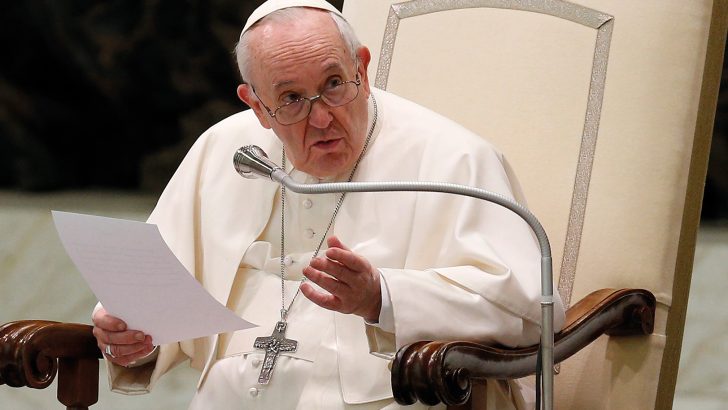Frank Litton
Catholic Discordance: Neoconservatism vs the Field Hospital Church of Pope Francis by Massimo Borghesi (Liturgical Press Academic, US$29.95/£23.99)
Two women shout across the street in angry argument from their tenement rooms. The doctor, poet and wit, Oliver St John Gogarty turns to his companion: “those women will never agree.”
“How do you know?.”
“Well, they are arguing from different premises.”
Arguments that settle disagreements depend on substantial agreement. We can think of this background of shared assumptions as a horizon: we are looking in the same direction, even if we disagree about what we see and what we should do about it.
It is clear that the Catholic horizon has departed the horizon that orientates our elites.How should we proceed now that it is no longer a matter of presenting and explaining Catholic positions, but of bringing the Catholic horizon into play in an indifferent world?
Having read this interesting account of Pope Francis’ teaching, the answer is clear: thank God he is our Pope, and study what he has to say.
The kingdom to which we are committed is at once a fact and a task. It is manifested in the Eucharist that calls on us to speed its realisation. In Evangelii Gaudium, Francis calls on us to renew our commitment.
The Church’s place is in the world where we endeavour in our thoughts and actions to bring the Gospel horizon into the world. Thomas Merton and Dorothy Day exemplify this engagement, as Pope Francis told a joint session of the United States Congress in 2015. In this the 100th anniversary of the founding of the Legion of Mary, Frank Duff should inspire us. In his two encyclicals Laudato Si’ and Fratelli Tutti, the Pope brings Catholic social teaching (CST) to bear on the problems that beset us. The content of the teaching is traditional – the Pope relies heavily on the elaborations of his immediate predecessors – but the tone is different. We are accustomed to encyclicals that promulgate Church doctrine. These encyclicals are pastoral. They enter into conversation with the world, seeking to merge the Catholic horizon with that of the world, showing how its perspective throws new light on the problems of climate change, populism, an out-of-control economic system that generates gross inequalities, and mass migration.
Critics
Of course, the Pope’s teaching has its critics. The criticism directed at the person of Francis, however, is more virulent, more strident than that to which we are accustomed. We find the centre of the criticism in the United States.
The climate is cold and the temptation to retreat behind barriers, where – united in the face of our enemies we enjoy the warmth of solidarity – is strong. The clearer the boundary between us and them, the more secure the unity. A couple of clear-cut, ‘hot button’ issues suffice to cut the world desperately in need of the Gospel message, out, while we talk to ourselves. These ‘behind-the- barrier’ Catholics believe that openness to the world equates to surrender. They fear Francis’ call to engage with the world.
Other American Catholics are angry with the Pope because he undermines their engagement with the world. They have joined sides with the neoconservatives arguing that their position aligns with Catholic social teaching.
Certainly, there are overlaps. For example, many neoconservatives opposed abortion. They share anxiety about the dangers of a powerful state. While CST, however, promotes subsidiarity as a counterbalance to an over-weening state, neoconservatives suppose that a market free from the trammels of state intervention is the guarantee of freedom. CST rejects the individualism that underlies this view.
Disappointed
Dismayed by his critique of capitalism, and disappointed by his reluctance to join their side in the cultural wars that divide the United States, they dismiss him for his ‘light-weight’ intellect.
Prof. Borghesi casts a wide net. Examination of Francis’ formal teaching is supplemented with reference to his sermons, lectures, speeches and interviews. We learn how the Pope’s thinking has been shaped by his thoughtful engagement with the debates of theologians and philosophers as they responded to the political and social upheavals of the 20th Century.
The main value of the book lies in its authoritative account of the Pope’s teaching in the context of modern Catholic thought. To learn that the criticisms directed against him by groups of United States Catholics are at best misguided, is a bonus.



